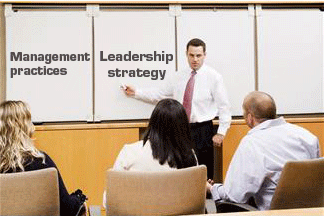Browse by Tag
- "Real" Innovation (2)
- Alignment (6)
- Business Innovation (9)
- Business Plan (2)
- Business Plans (1)
- Creativity (24)
- Critical Success Factors (4)
- Entrepreneurship (9)
- Global Competiveness (4)
- Human Side (11)
- India (1)
- Innovation (4)
- Innovation Consulting (18)
- Innovation Killers (3)
- Innovation Management (18)
- Innovation Tools (17)
- Innovation Training (24)
- Innovations (7)
- Inventions (16)
- IT Innovation (1)
- Leaders (5)
- Leadership (20)
- Leadership Development (13)
- Organizational Leadership (2)
- Organizational Strategy (20)
- Personal Values (6)
- Prediction (5)
- Strategic Innovation (38)
- strategic planning process (4)
- Strategy (3)
- Training (1)
- Vision (5)
- Weekly Dose (8)
Posts by Month
- 2014
- 2013
- 2012
- 2011
- 2010
- 2009
- 2008
- 2006
Convergence Drives Strategic Planning in 2013 - Part 2
Part Two: Global Scale "Convergent Thinking"- The New Main Course?
The need for "convergent thinking" is not only still on the table, but may well become the centerpiece of strategic planning for many organizations. But, just because this trend is rapidly growing, doesn't mean it's an easy road to success.
Markets are fickle. They can seem to arise overnight and die off as quickly. Studies indicate 60% of employees are disengaged and frustrated with their work and too many executives are still relying on management practices rather than leadership. This only serves to complicate the risks of innovation, not to mention what it can do to a new market entry strategy. Many organizations need to begin right here with a leadership strategy to create a more engaged, innovative and stable workforce.

Add to that the need for an aligned vision and necessary support structures to navigate the convergence of commercial enterprise with governments and NGO's, and the risks of moving into new consumer groups, platforms and new geographies, can be daunting. What shifts are necessary to consider when moving globally and what internal support is required? How ready are you to innovate?
When moving from marketing partnerships on local levels to sustainable global markets, any undertaking in international development must consider the growing role of cross-sector convergence. This entails not only possibilities for new and broader markets as technologies and business sectors converge, but must also consider how convergence is playing an increasingly key role in forming solutions to the world's most pressing issues in developing countries.
Commercial self-interest, NGO's and governments are increasingly coming together to find solutions. These hybrid organizations are challenging today's sector boundaries and outdated paradigms as never before, shifting the emphasis away from income, organizational structures and stereotypical roles. With a growing awareness that markets are inextricably linked to solutions for problems such as extreme poverty, drought, and disease in developing countries, considerations of impact and outcome are coming to the fore.

To satisfy business self-interest in new markets, a global sense of community must emerge from the global development of markets. Success in the Emerging Market Economy is a combination of access to customers and resources plus willingness and a plan to help build sustainable communities.
When it comes to the global marketplace, business, government and NGO's all see global development as the best way to create opportunities for millions of people to secure a decent life and increase prosperity. If you want the resources and the market, you must help build the surrounding sustainable community to support it.
License to operate must contain certain elements to succeed, varying by region and company size, including:
- Compliance with law
- Risk management
- Reputation enhancement
- Value added to communities
Companies must address sustainability factors from human resource management and respect for local cultural values to eco-efficiency and social responsibility including helping to limit climate degradation and loss of biodiversity. For example, as viewed on the Chinese cable network in the past few weeks, workers are rising up in protest of environmental degradation. Very simply, they too want to breathe clean air, drink clean water and be treated with respect. Good working relationships at all levels help create a more even road for sustainability.
The business case for sustainability in emerging markets can actually work to pinpoint opportunities in Asia, Africa, Central and Eastern Europe, Latin America and the Middle East, but be aware responsible business conduct needs to step up. To develop new global markets built on ever expanding cross-sector convergences, strategy must now include linking to the communities involved. It's looking like these markets will arise from the convergence of solutions built on innovative relationships responding to converging challenges and employing new approaches. Hiding behind outdated management practices - no longer an option.
What are your challenges and what value do you see in utilizing an Innovation Readiness Assessment for strategic planning?
Convergence Drives Strategic Planning in 2013 - Part 1
Part One: What's on Your Strategic Menu? - Some Factors to Consider
Domestic and international politics, finances and markets loom large in organizational planning in 2013, but the trend towards global development remains a constant in this convergent economy. Global development is expanding, and an important factor to consider when planning and developing strategy for new markets and sustainable innovation models. With resources and markets scattered all over the globe, if you're in business, you're global, at least on some level.
When it comes to planning and global markets, leadership needs to consider the driving forces of convergent economies. For businesses with traditional organizational structures and stereotypical roles this brings continuing challenges. To facilitate forward movement they will likely be required to allow new ideas to find form and implementation. As convergence gains momentum, this primary leadership competency of strategically allowing flow and change becomes no longer optional, but necessary to design an organization's desired future.
With commercial businesses, governments, and NGO's increasingly finding the need and desire to converge to facilitate global development, grow the global economy, attain global resources, and manage suppliers, customers, employees, partners and technologies, these new strategic alliances will continue to blur lines. These collaborations will for instance, create new issues and challenges for stakeholders, funding, competition, growth opportunities, to cite just a few.
Within old markets innovation is essential to survival. New ideas are copied so easily across single sectors, that far from being a fad, innovation is vital to existence. Whether talking automobiles in the US market, opening new Asian markets for products, or even fundraising for non-profits, new ideas become global property in a sense, as soon as they see any form of media, so acting fast and decisively is a priority; and then be ready to do it again and again. In other words, keep acting like an entrepreneur, Think Small and Fast.

Customer driven innovation is apparent in the new Ford Escape with it hands-free lift-gate. What a great idea for the owner out shopping, without a hand free to open the hatch. Campbell's 2013 growth strategy includes expanded presence in emerging markets. North America will see increased offerings in soup, simple meals and healthy beverage choices - more aware consumers want quick, but nutritionally better choices. President and Chief executive Officer Denise Morrison stated that Campbell's will carefully attend to its core business, "while we shift our center of gravity toward new consumer groups, new consumer needs, new consumer platforms and new geographies."
Keeping ahead of the curve means harvesting innovative ideas from all available sources, including customers, suppliers, and adjacent sectors as well as your in-house intrapreuneurs. We've seen enormous growth in cross-sector convergence giving rise to new products and markets. Cosmeceuticals, Nutricosmetics, Nutraceuticals and Digital/Analog are just a few examples of scientific advancements and markets converging, and these are huge new markets.
As technologies and markets continue to advance there is every reason to believe this is just the beginning. Identifying your core competencies, keeping inquiry going on all fronts, adjusting to sector trends, recognizing convergences and knowing how to position products are all essential for innovation, growth and sustainability.
Targeting new opportunities requires both innovation and branding strategies. Take for example how Mazda has chosen to structure and innovate in the global market. Recognizing that larger rivals tend to aim for market center, where size alone gives them an edge, Mazda adjusted its aim and found success targeting "inside high" for their cars. Mazda continually identifies and tweaks their "strike zones" for cars, sports cars, minivans and B-cars in the US, Europe and Japan, where markets are always changing and evolving, as well as in emerging markets.

Effective innovation for consumer goods, while challenging to come by, is always the key to sustained competitive advantage. Convergence presents challenges, but also many more opportunities. Take for instance, two brands teaming up. Pepsi Max Citrus Freeze and Doritos Jalapeno Fire launched a "complementary flavors" joint promotional campaign. Reportedly there was a significant increase in sales for both products as it drove consumers to purchase both together.
Co-creation as best practice has its place, when well placed. Customer communities and co-creation must figure ever larger in the strategic planning process. The process must create brand value and customer value for further innovation to continue to deliver sustainability.
So, what does your plan look like for the coming year? Does it include new global markets, new cross-sector markets, better customer out-reach, new alliances, niche markets, or still undecided?
What about the role of developing emerging markets, global development and the global convergent economy?
Watch for:
Convergence Drives Strategic Planning in 2013 - Part Two: Global Scale "Convergent Thinking"- The New Main Course?

